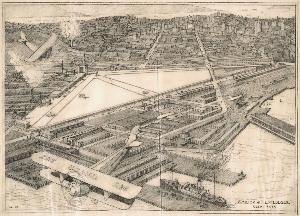Timothy Ludwig Pflueger
Timothy Ludwig Pflueger;Timothy L. Pflueger
Place: San Francisco
Born: 1892
Death: 1946
Biography:
Introduction
Timothy Ludwig Pfluegerwas a renowned American architect, interior designer, and architectural lighting designer. Born in 1892 in San Francisco, California, he played a significant role in shaping the city's architectural landscape. Pflueger's work had a profound impact on the development of Art Deco in California architecture.
Early Life and Career
Pflueger started his career as a working-class draftsman and never attended college. Despite this, he established himself as a prominent figure in the architectural community. His designs were characterized by a unique blend of Art Deco, Streamline Moderne, neo-Mayan, Beaux-Arts, and Mission Revival styles.
Notable Works
Some of Pflueger's most notable works include the luxurious cocktail lounges at the Mark Hopkins Hotel, the St. Francis Hotel, and The Fairmont. These designs not only showcased his architectural prowess but also reflected his ability to create influential interior spaces. Pflueger was also a member of several private men's clubs, including the Bohemian Club, Olympic Club, and The Family, for which he designed buildings and interior architecture.
Legacy
Pflueger's legacy extends beyond his architectural designs. He was a board member of the San Francisco Art Association and played a crucial role in the establishment of the San Francisco Museum of Modern Art (SFMOMA). His contributions to the world of architecture and art are still celebrated today.
- Art Deco and Streamline Moderne styles characterized Pflueger's designs.
- Pflueger was a member of several private men's clubs, including the Bohemian Club, Olympic Club, and The Family.
- He designed buildings and interior architecture for the Olympic Club and The Family.
- Pflueger was a board member of the San Francisco Art Association and helped establish the San Francisco Museum of Modern Art (SFMOMA).
Conclusion
Timothy Ludwig Pflueger's contributions to American architecture are undeniable. His unique designs, which blended various styles, continue to inspire architects and designers today. As a pioneer in his field, Pflueger's legacy serves as a testament to the power of innovation and creativity in the world of architecture and art. For more information on Timothy Ludwig Pflueger, visit https://Wikioo.org/@/Timothy-Ludwig-Pflueger.

